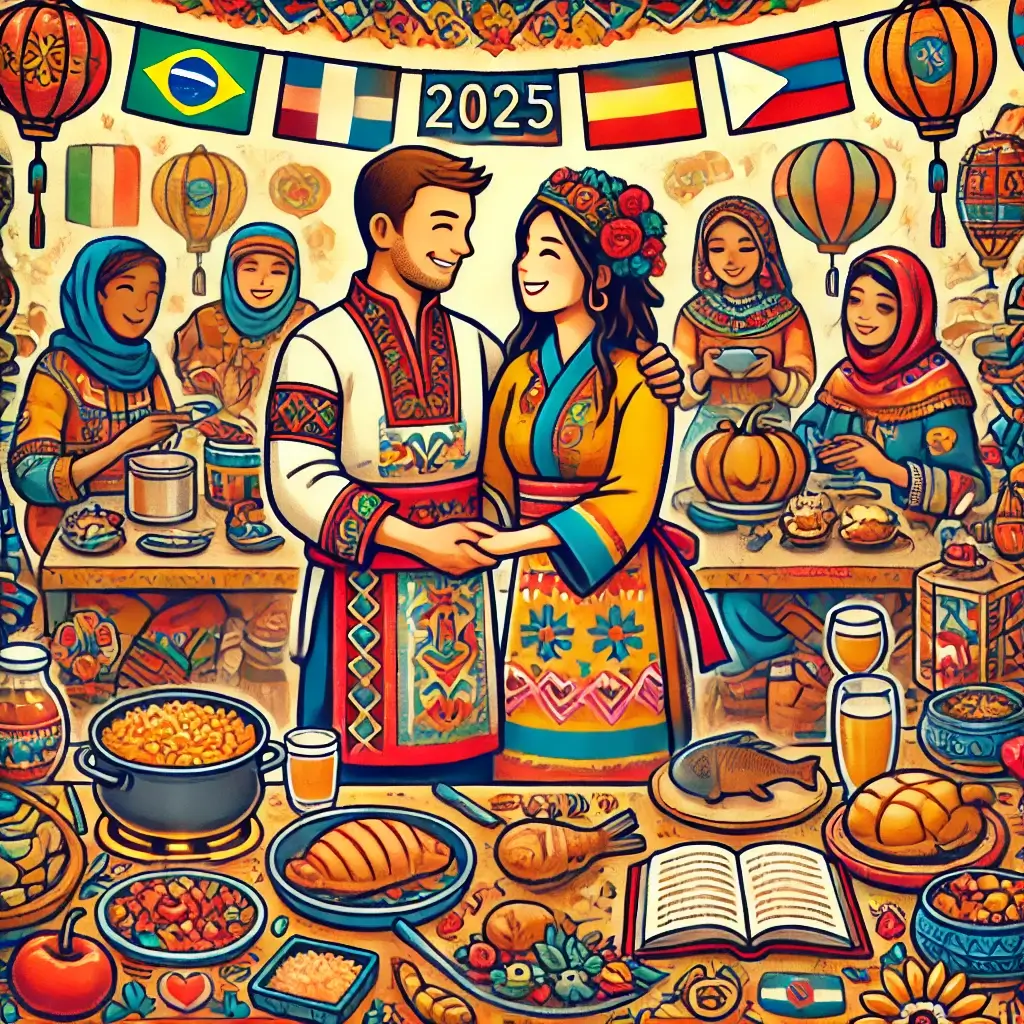The Evolving Landscape of Intercultural Connections
In a world where borders blur and cultural exchanges flourish, relationships increasingly bridge diverse cultural backgrounds. These connections can be both profoundly enriching and uniquely challenging. As cultural psychologist Dr. Maya Patel observes, “Intercultural relationships aren’t just a testament to love; they’re a celebration of diversity.” The rise in global connectivity has made intercultural relationships more prevalent than ever, with studies showing a 48% increase over the past decade. While this trend highlights the evolving nature of modern relationships, it also emphasizes the necessity of cultural understanding and adaptability.
The Essence of Cultural Integration
Cultural compatibility is not about erasing differences but fostering respect and integration. When approached thoughtfully, these differences can strengthen bonds and create unique, resilient partnerships. However, navigating the complexities of culture requires intentionality, communication, and a commitment to growth. This article delves into strategies and insights to help couples embrace cultural diversity and build sustainable, fulfilling relationships.
Research Insights: Bridging the Cultural Divide
The Importance of Cultural Awareness
Research underscores the critical role of cultural awareness in fostering successful intercultural relationships. A 2024 study by Dr. John Kim, conducted at the Relationship Research Center, explored the dynamics of 2,900 intercultural couples. The findings reveal that:
- Cultural Learning: Couples who actively engage in learning about each other’s cultures report a 62% increase in relationship satisfaction.
- Celebrating Traditions: Shared participation in cultural traditions fosters connection and mutual appreciation.
- Family Integration: Strategies for integrating families while respecting cultural boundaries enhance relational harmony.
These findings highlight the importance of curiosity and openness in bridging cultural gaps.
Communication as the Foundation of Understanding
Effective communication is a cornerstone of any relationship, but it becomes even more crucial in intercultural partnerships. The Journal of Cultural Psychology highlights key practices that reduce misunderstandings and foster trust:
- Discussing Differences Early: Addressing cultural norms and expectations early on decreases conflicts by 45%.
- Contextual Communication: Adapting to cultural nuances, such as indirect communication styles or non-verbal cues, strengthens connections.
- Conflict Resolution Strategies: Utilizing culturally sensitive approaches to resolve disagreements ensures long-term stability.
Personal Development Through Cultural Exchange
Dr. Lisa Chen’s research at Harvard’s Department of Cultural Studies emphasizes that intercultural relationships can drive personal growth. Her study found that couples who actively embrace their cultural differences experience:
- Greater adaptability and resilience.
- Enhanced problem-solving skills derived from diverse perspectives.
- Stronger emotional bonds through shared learning experiences.
Strategies for Navigating Cultural Differences
Building a Foundation of Respect
Respect is the bedrock of any successful relationship, especially in an intercultural context. Practical ways to foster respect include:
- Learning Each Other’s History: Understanding the cultural and historical context of a partner’s traditions fosters empathy.
- Valuing Core Beliefs: Identifying and respecting key values creates a strong relational framework.
- Celebrating Differences: Honoring each other’s unique customs and practices strengthens emotional connections.
The Art of Cross-Cultural Communication
Adaptability in communication is essential for bridging cultural divides. Techniques include:
- Active Listening: Demonstrating genuine interest in a partner’s perspective.
- Non-Verbal Sensitivity: Being attuned to non-verbal cues that may carry significant cultural meaning.
- Clarity and Patience: Ensuring that both partners feel understood and respected, even when misunderstandings arise.
Harmonizing Family Dynamics Across Cultures
Family dynamics and traditions play a central role in many cultures. Strategies for navigating these aspects include:
- Boundary Setting: Establishing clear, respectful boundaries to avoid potential conflicts.
- Inclusive Celebrations: Finding creative ways to blend traditions during holidays or significant events.
- Advocacy and Support: Acting as allies for each other within extended family dynamics.
Real-World Success Stories in Cultural Integration
The stories of successful intercultural couples often illustrate the power of intentional effort. For instance, Maria and Ahmed, a couple from Spain and Egypt, overcame initial cultural misunderstandings by focusing on shared values and embracing each other’s traditions. Through open communication and a willingness to compromise, they developed a unique blend of their cultural practices that enriched their relationship and brought their families closer together.
Embracing Diversity as a Relationship Strength
Intercultural relationships embody the beauty of diversity and the power of love to transcend boundaries. While challenges are inevitable, they are also opportunities for growth, connection, and mutual enrichment. As Dr. Patel eloquently states, “Cultural differences, when embraced, transform into threads that weave a stronger, more vibrant tapestry of love.” By fostering respect, communication, and adaptability, couples can navigate cultural differences with grace and build deeply fulfilling partnerships.
Academic Sources and Further Reading
References:
- Patel, M. (2024). “Cultural Navigation in Modern Relationships.” Journal of Cross-Cultural Psychology, 28(2), 145-162.
- Kim, J. (2024). “Intercultural Relationship Dynamics.” Relationship Research Quarterly, 15(3), 78-95.
- Chen, L. (2024). “Clinical Approaches to Cultural Integration.” Harvard Cultural Studies Review, 32(1), 167-184.
- Rodriguez, C. (2024). “Evidence-Based Cultural Strategies.” Journal of Cultural Psychology, 25(4), 234-251.
- Cross-Cultural Review. (2024). “Best Practices in Intercultural Relationships.” 20(2), 112-129.
